|
Puraanic expression of chhandas : It seems that the first 6 chapters of Bhaagavata
puraana are connected with the first 6 days of a 12 – day yaaga. The first 6 yaaga days have been attributed to Gaayatri,
Trishtup, Jagati, Viraat, Pankti and Atichhanda. After that start 3 days which are related respectively with Gaayatri, Trishtup
and Jagati. The first chapter of Bhaagavata puraana is concerned with beating of Dharma having the form of an ox by Kali,
no – reply by seer Shrangi to king Parikshit, putting of a serpent by Parikshit on the neck of the seer, getting the
curse of being bitten by serpent and dialogue between Shuka and Parikshita. In all these stories, who is Parikshita ? One
vedic mantra says that the earlier and later pitris/manes are the parikshitah, those who are scattered around. It is our senses
which are scattered. Then who can be Shuka? What has been called Aja/goat in braahmanic literature, may be the Shuka in puraanas.
Seer Shringi is the highest state of human consciousness. When one is unable to receive response from this stage, then the
best way is to become introvert. Shuka state has to be attained for success in
Gaayatri. In ordinary sense, Shuka means a parrot. But in spirituality, it may means a stage where all noise has vanished.
Thus while vedic literature talks of hearing primordial sound before dawn, puraanic literature has transformed it in the most
beautiful way like this.
The
second chapter of this puraana is connected with the wide form of Vishnu and the description of manifestation. This chapter
can be said to be related with trishtup. Trishtup is concerned with efficiency, how efficiently a work can be performed. For
this purpose, it is essential that our senses may not be confined to ourselves, they should look beyond that. As mentioned
above in connection with the story of king Nala, he knows the art of tending of horses, not the art of gambling. Both these
arts are connected with trishtup chhanda. The description above dealt with the art of gambling, but not the art of horse tending.
This has been clarified in this chapter of Bhaagavata puraana through the concept of broad form of Vishnu.
The
third chapter of Bhaagavata puraana contains story of killing of a demon Hiranyaaksha (who had stole the earth) by lord Vishnu
having the form of a sacrificial boar and bringing the earth up on the water. The other story is the marriage of seer Kardama
with Devahooti, begetting of son Kapila by Devahooti and liberation of Devahooti and Kardama by the sermons of son Kapila.
This chapter can be said to be an explanation of Jagati chhanda. It is interesting to note that in case of trishtup chhanda,
it was desirable to rise above the nature of gambling and reach a state of definiteness. Here in case of Jagati chhanda, the
demon who is well versed in the art of gambling/aksha, has stole the earth. This statement may mean that in nature, this state
has become predominant. This state of affair was rectified by the manifestation of Vishnu in the form of a sacrificial boar.
Puraanic texts explain what this boar can be. Every part of this boar has been identified with some implement of a sacrifice
ritual. Then only the state of gambling can be finished from the earth, from the nature.
In vedic literature, this seems to have been codified in the form of ear – to gradually attain the Shruti instead
of Smriti. Kardama in Sanskrit means mud. This mud may be the same as has been called noise in the description above. Devahooti
may mean one who can have a deep craving for the divine. Thus, this chapter is unique in the sense that it talks of elimination
of noise through a marriage of noise and divine craving. In vedic literature, the divine craving has been compared with the
craving of a frog for rain.
The
fourth chapter of Bhaagavata puraana contains the stories of the yaaga of Daksha, the penances of Dhruva, the anecdote of
Puranjana, the birth of king Prithu from Vena and the leveling of earth by Prithu
and milking of this earth having the form of a cow by all the creatures. This chapter may be related either with Anushtup
chhanda. The purpose of putting the story of Daksha in the beginning of this chapter is not clear. Daksha or efficiency should
go to either trishtup or jagati chhanda. This direction is opposite to south. South is connected with efficiency and a state
of gambling. On the other hand, north direction is connected with definiteness. The first requirement of Anushtup chhanda
is the formation of a Dhruva/firm state in which the signals generated in the highest state of consciousness may safely be
transmitted to the lowest state. Thus, the Dhruva/firm state may mean a state of lower entropy. Regarding the story of Puranjana,
pura means abode. When one is situated in a pura, nobody can harm him. In a somayaaga, anushtup chhanda may be connected with
north direction which is the place of a fire which has got the trait that it can be either introvert or extrovert. It is situated
at the boundary. Then regarding the story of Prithu, this is a state where the individual consciousness has merged into collective
consciousness. As has been mentioned in case of Dwesha, the leveling of earth means that the individual consciousness have merged into collectiveness.
The vedic origin of this trait is yet to be investigated.
The
proper explanation of other chapters of Bhaagavata puraana is yet to be investigated. The ninth chapter contains the stories
of different warrior – seers which also includes that of penances of Bhageerata for descending of Ganges on the earth
so that the bone remains of his forfathers may get pious. This chapter is connected with Jagati chhanda and therefore these
stories become important to properly understand this chhanda. Jagati has been called as bone in vedic literature. In Sanskrit,
the word asthi/bone may mean a state of pure consciousness, the state of least entropy. As has been described above, the function
of jagati chhanda is to rectify the state of higher entropy. In puraanic literature, goddess Lakshmi has been stated to be
very flickering, having higher entropy.
Stoma
The verses of Rigveda are composed in various chhandas.
In Saamaveda, the saama to be sung is generally composed of 3 verses of Rigveda and while singing a saama, various lines of
these verses are repeated again and again in a definite order. This order is dictated by the stoma in which the saama has
to be sung. These stomas have names such as trivrit(9), panchadasha(15), saptadasha(17), ekvimsha(21), trinava(27), trayastrimsha(33)
etc. It is mystery what is really the purpose behind these orders. One text says that saamas are divine, chhandas are progeny.
At another place, it has been said that with saama, one achieves a military array, while with chhanda one forms a group, an
assembly, a crowd. This reminds one of the Bose – Einstein and Fermi – Dirac statistics in modern particle physics.
Some particles, especially having electrical charge, behave in Fermi – Dirac statistical way, while other particles
in Bose – Einstein statistical way. For those group of particles which behave in Fermi – Dirac statistical way,
no two particles can be placed at the same energy level. In other words, each particle has it’s own particular energy.
This type of behaviour arises due to the presence of spin momentum on the particle. On the other hand, for those group of
particles which obey Bose – Einstein statistics, as many number of particles can be adjusted at the same energy level
in a group. Contradictions also appear in braahmanic literature which requires proper explanation in future.
Can chhanda can be compared to formation of bands in modern theory of solids? When atoms come together, the charge sphere
around them interacts with each other and creates attractive and repulsive forces. This leads to formation of bands and band
gaps. The property of a band is that it allows free motion of charge in it. The motion of charge is forbidden in band gap.
The formation of chhanda in the realm of consciousness can not be compared with formation of bands and band gaps because the
particles forming bands and band gaps obey different types of statistical rules called Fermi - Dirac statistics. On the other
hand, it seems that formation of chhanda is limited to Bose - Einsteen statistics only. 
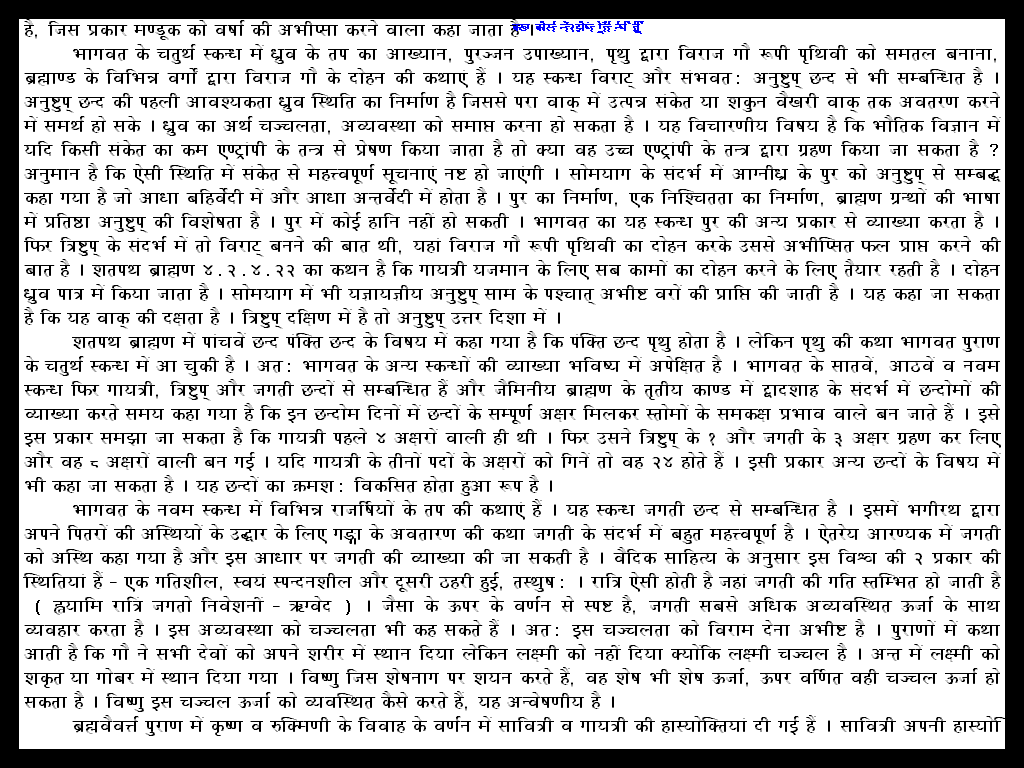
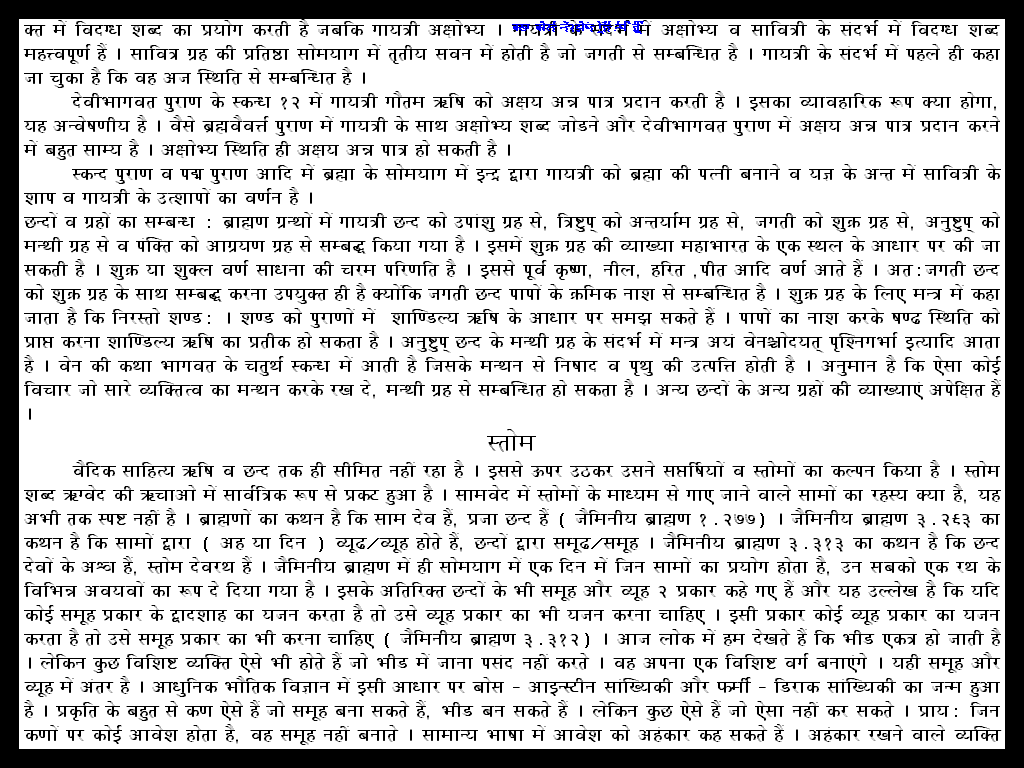
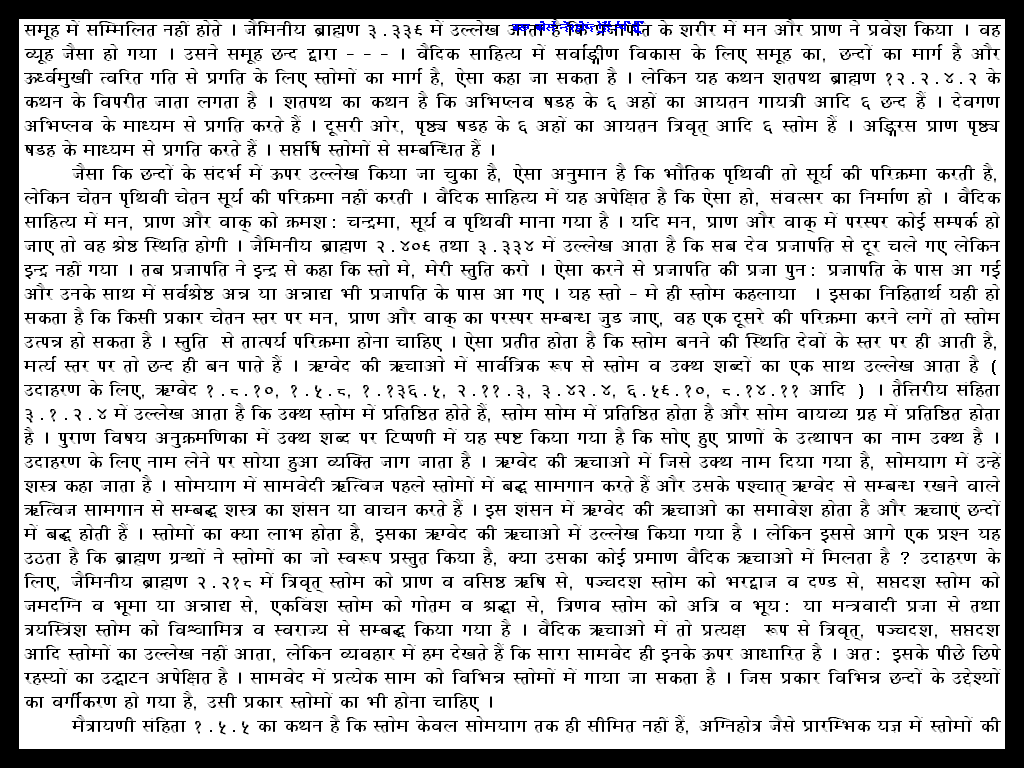
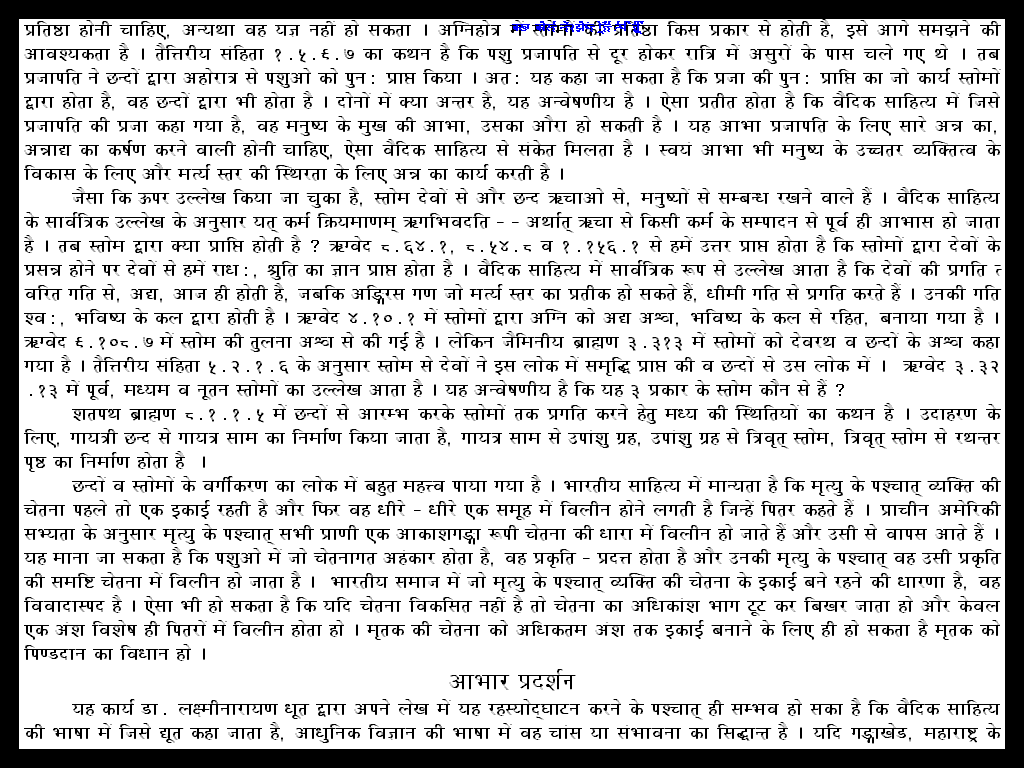
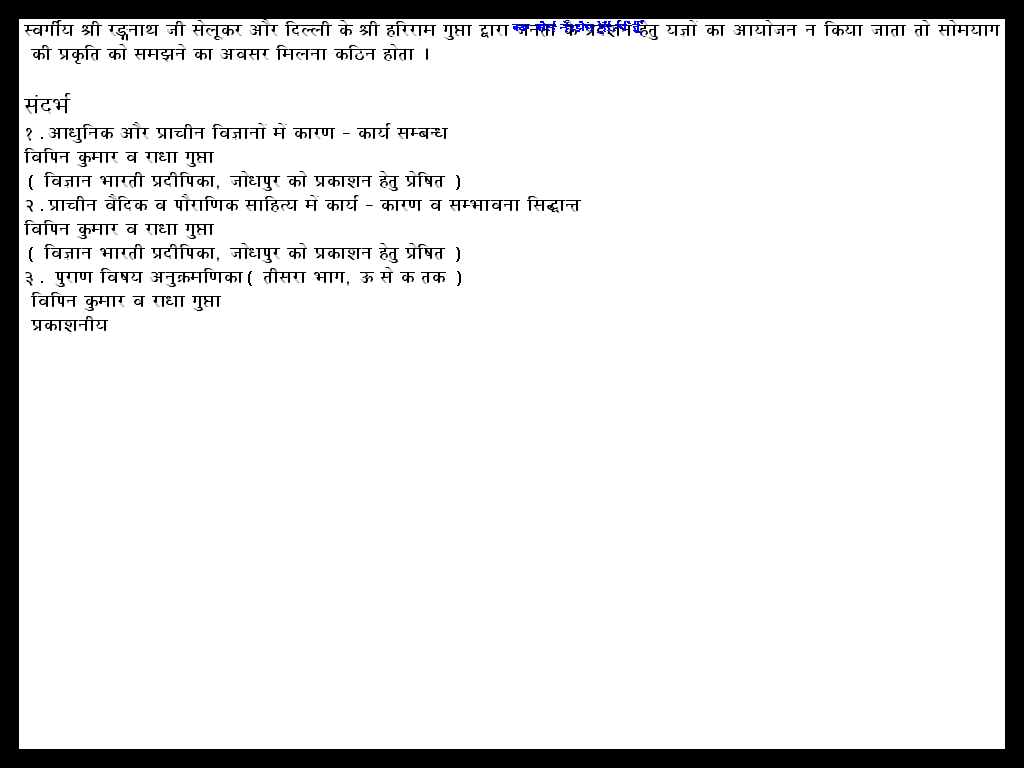
|



